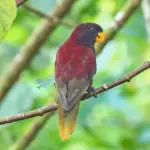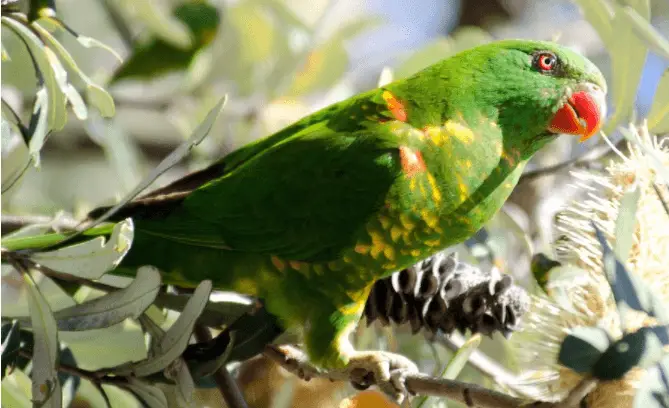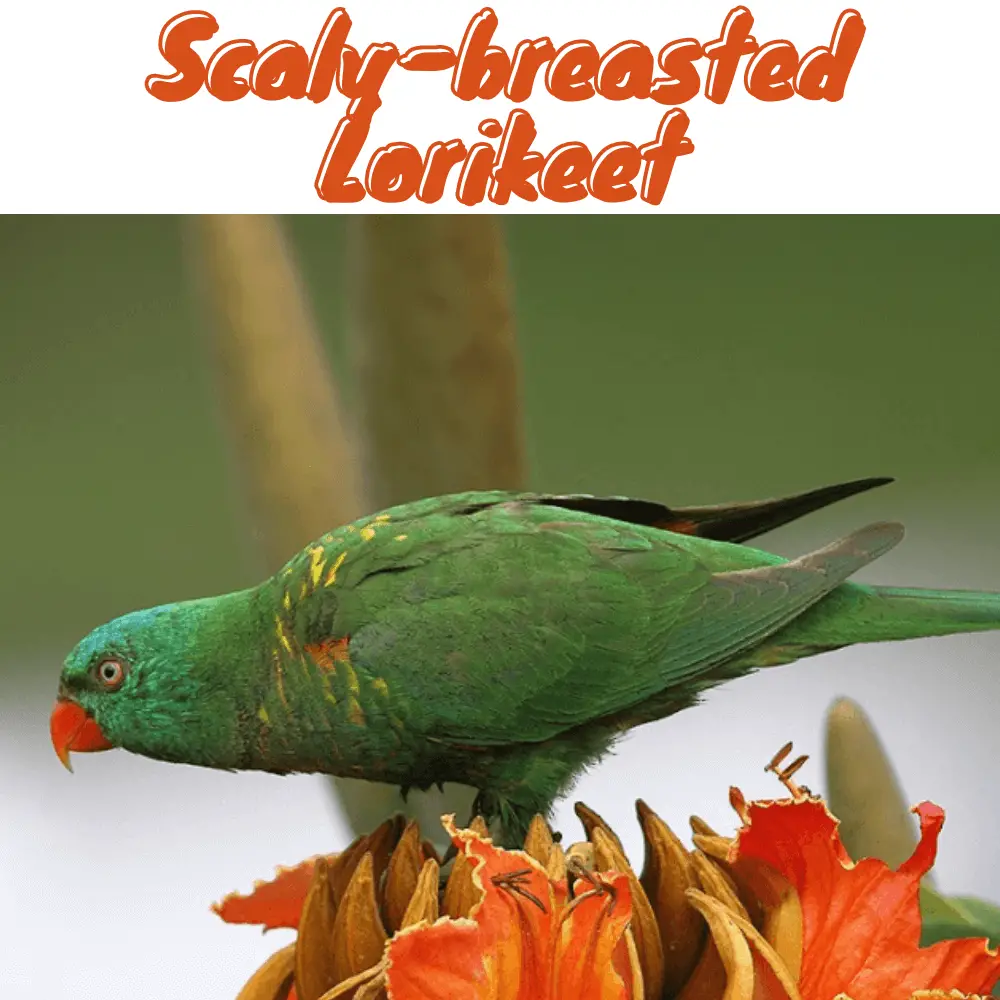
Systematics History
Thought to form a broad species group with T. euteles, T. flavoviridis (with meyeri), T. johnstoniae and T. rubiginosus. Formerly considered polytypic, with birds of N Queensland placed in race neglectus. Monotypic.
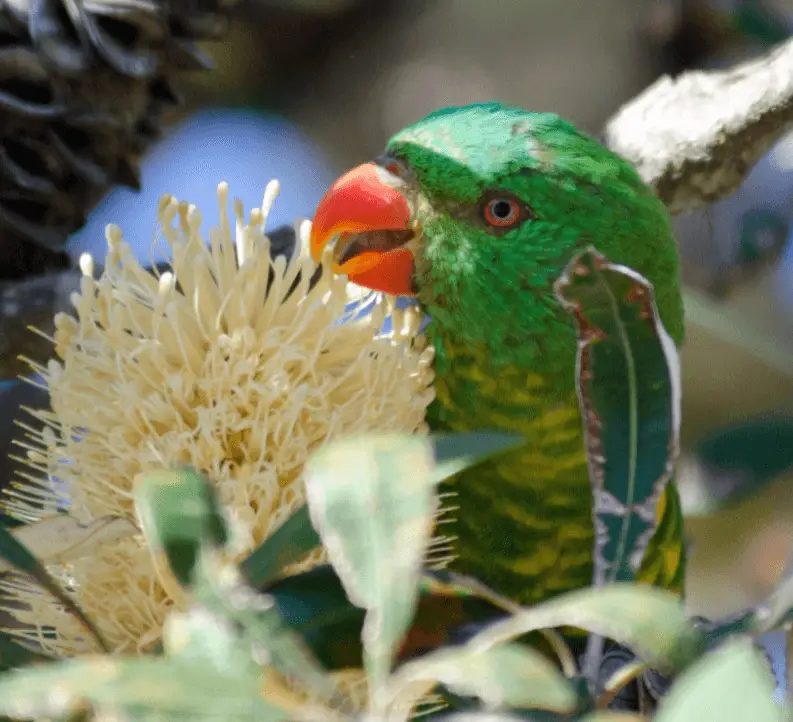
Subspecies
Monotypic.
Distribution
E Australia. Population near Melbourne derived from escapes.
Habitat
Lowland wooded areas, flowering heathlands, Melaleuca swamps, urban parks and gardens, cultivated areas.
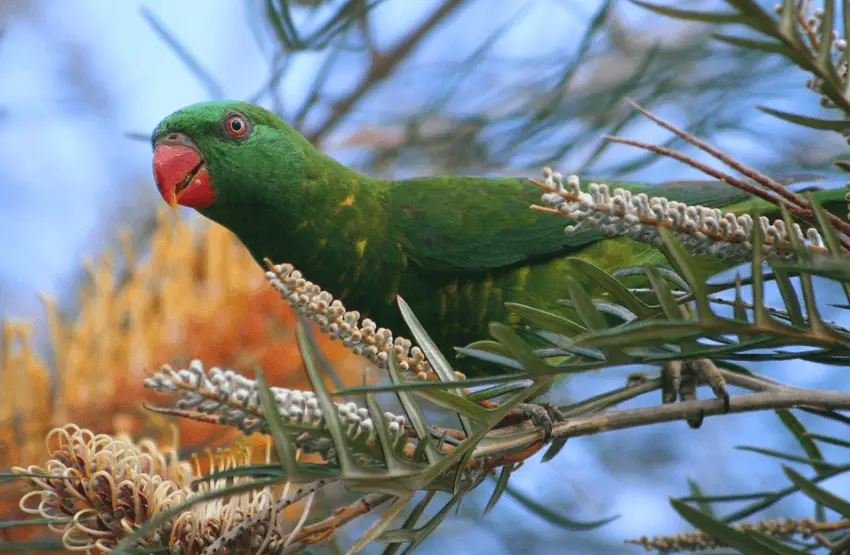
Movement
Nomadic in response to flowering events, although in the center of range some birds seem to be present throughout the year.
Scaly-breasted Lorikeet Food
At least 25 species of plant were recorded in the diet, 99% consisting of flowers. Those of Eucalyptus are the main food, but other important genera are Banksia, Callistemon, Melaleuca, and Tristania.
In particular, E. tereticornis and E. pilularis formed nearly 50% of food in one study, with a further 25% being supplied by E. drepanophylla, C. viminalis and M. quinquenervia.
Other food plants include Erythrina indica, Schefflera actinophylla, Pithecellobium saman, Grevillea robusta, Banksia Serrata, Casuarina, and grass trees Xanthorrhoea.
Although not so adaptable to exotic foods as T. haematodus, camphor laurel Cinnamomum camphora fruit is now a regular seasonal component of some groups of birds. Recorded attacking ripening sorghum crops.
Interesting facts about scaly breasted lorikeet by weird square
SOURCE: Weird Square
Sounds and Vocal Behavior
Utters a variety of sharp squeaky screeches, sounding quite hoarse and lacking any rolling tonal quality, scaly breasted lorikeet call such as “skhee!”, “klee” or “kha-kha”.
Scaly Breasted Lorikeet As Pets
SOURCE:OzBirdZ
Breeding
May–Feb, in N of range apparently related to rainfall; Aug in Victoria. Unlined nest in hollow limb or hole high in the tree. Scaly-breasted Lorikeet Eggs 2, occasionally 3; incubation lasting c. 25 days; nestling period c. 8 weeks.
Conservation Status
Not globally threatened. CITES II. Common in C of range in SE Queensland and NE New South Wales, where large flocks occur; at N and S edges of range progressively rarer.
SOURCE:BIBY TV


